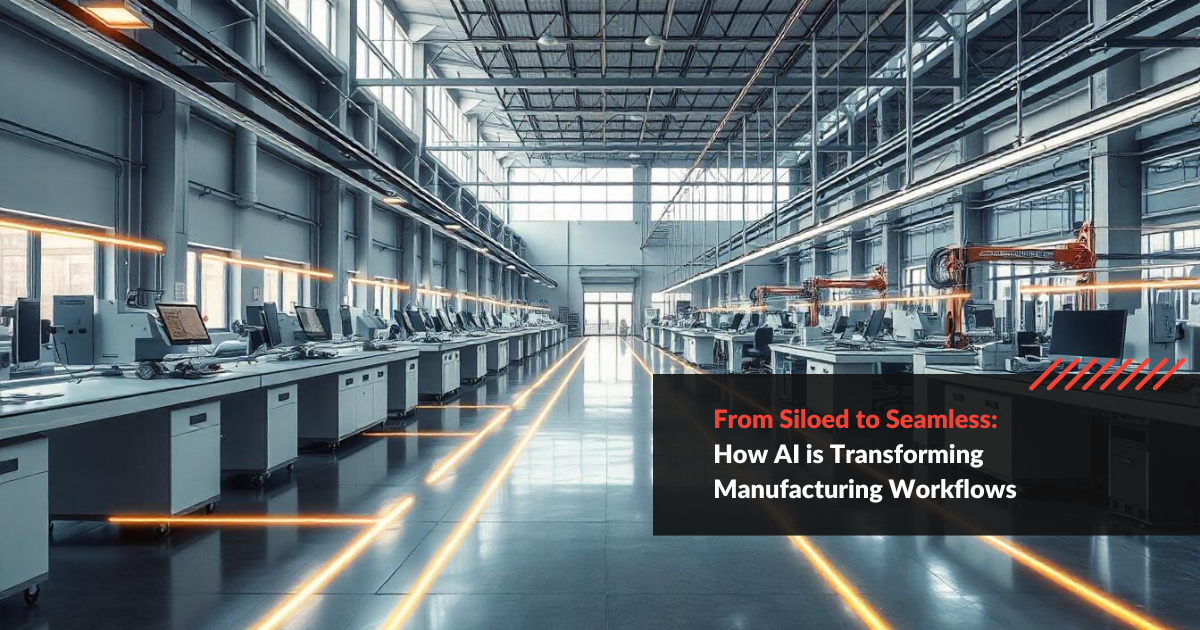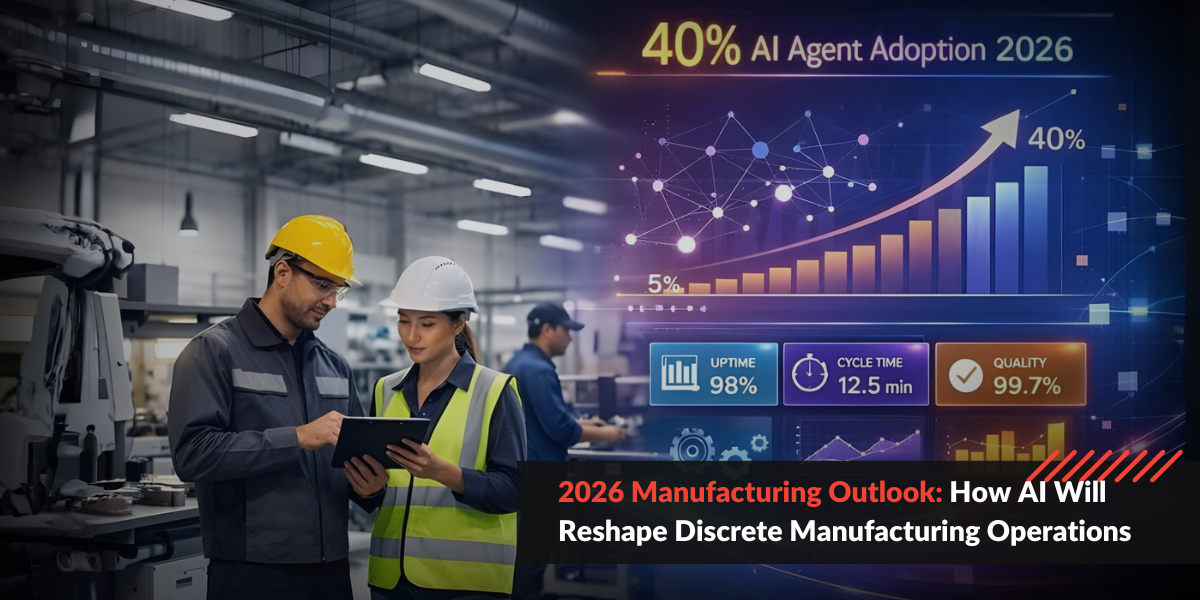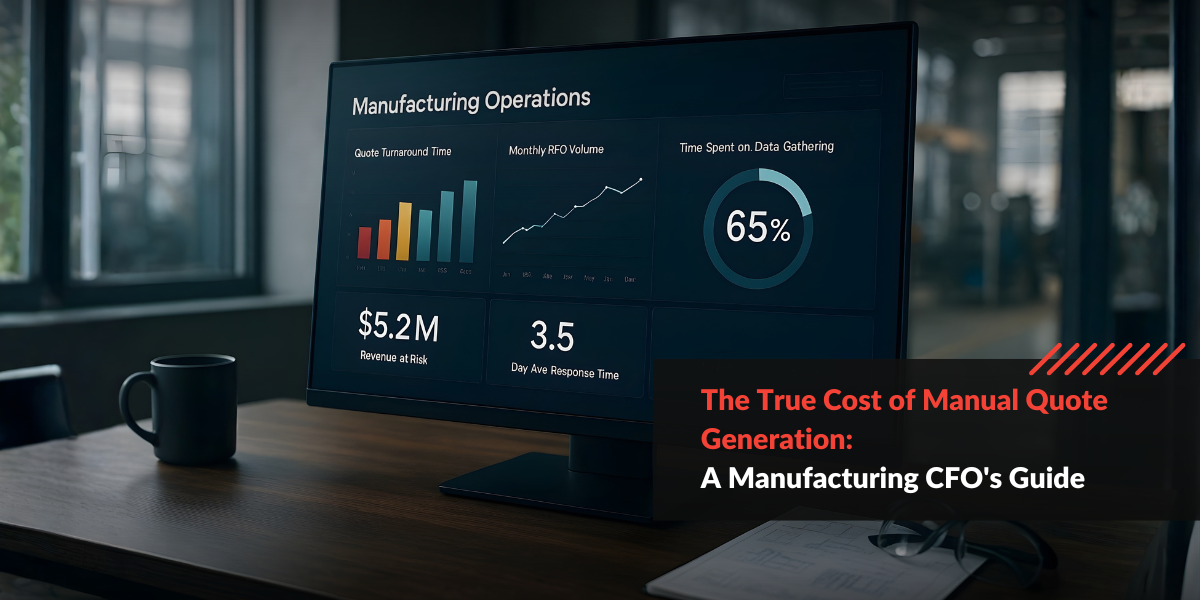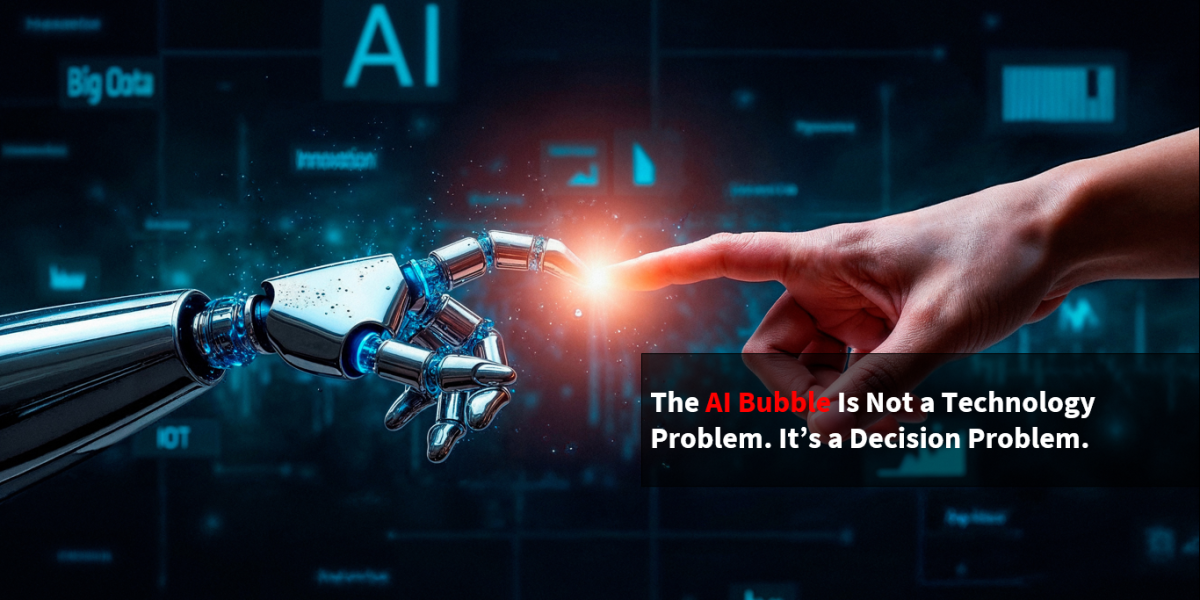The manufacturing industry has long been burdened by silos—individual systems or departments that work independently, often leading to inefficiencies, miscommunication, and bottlenecks. But with the rise of AI automation, those silos are breaking down. We’re entering an era of seamless workflows, where data flows freely across systems, decisions are made in real-time, and operations run smoother than ever.
This blog will explore how AI-driven automation is transforming the manufacturing industry from siloed systems to integrated, efficient workflows. We’ll dive into the ways AI is streamlining operations, enhancing productivity, and improving communication, all while setting the stage for a more agile and connected future in manufacturing.
To see a practical approach to this transition, explore this step-by-step implementation guide for adopting AI-enabled automation in parts cross-referencing.
The Legacy of Siloed Systems in Manufacturing
For decades, manufacturing has been plagued by disconnected systems. Whether it’s between production lines, departments, or entire factories, these silos have created barriers that limit efficiency and slow down operations. For example, one department might not have access to real-time information from another, leading to delays in decision-making and issues like overproduction or supply chain disruptions.
Historically, siloed systems were the result of disparate technologies being implemented at different times, often for specific functions. This led to fragmented workflows, where systems couldn’t communicate easily, if at all. As a result, manufacturers had to rely on manual processes, spreadsheets, and countless emails to keep things moving. The cost? Lower productivity, increased errors, and a constant scramble to manage the chaos.
Now, AI-led automation is breaking down these barriers, integrating systems, and enabling manufacturers to achieve the seamless, real-time workflows they’ve long needed.
How AI Automation is Streamlining Operations in Manufacturing
AI is no longer just a futuristic concept; it’s being used across the manufacturing sector to create smarter, more efficient operations.
“The AI in manufacturing market size was USD 5.07 billion in 2023 and is forecasted to reach USD 68.36 billion by 2032, growing at a CAGR of 33.5% from 2023 to 2032.
Source: All-About-AI
Let’s explore how AI is making an impact in these key areas:
Sales & Customer Service
- Customer Support Automation: AI chatbots provide instant customer support, handling inquiries and resolving issues around the clock.
- Sales Order Processing: AI expedites order processing, from order entry to fulfillment, enhancing the customer buying experience.
- Lead Scoring & Qualification: AI evaluates potential customers based on their likelihood to buy, allowing sales teams to focus on high-potential leads.
Production & Operations
- Predictive Maintenance: AI anticipates equipment failures, scheduling maintenance to prevent downtime and extend machine life.
- Quality Control & Defect Detection: Advanced AI algorithms detect and classify production defects in real-time, ensuring high product quality.
- Inventory Management: AI optimizes inventory levels based on predictive analytics, reducing excess stock and shortages.
- Production Scheduling: AI systems dynamically adjust production schedules based on demand forecasts, worker availability, and machine status, enhancing operational efficiency.
Supply Chain & Logistics
- Demand Forecasting: AI analyzes market trends and historical data to accurately predict future product demand.
- Supplier Management: AI enhances supplier selection and management by evaluating performance and compliance metrics.
- Order Processing: Automated systems streamline order processing, reducing errors and improving customer satisfaction.
- Logistics & Shipment Tracking: AI provides real-time updates and predictive insights on shipment statuses, optimizing logistics operations.
Finance & Accounting
- Invoice Processing: AI automates invoice creation and processing, improving accuracy and reducing processing times.
- Expense Management: Automated systems track and manage employee expenses, ensuring compliance and budget control.
- Financial Reporting: AI compiles comprehensive financial reports in real-time, providing valuable insights for decision-making.
- Fraud Detection: AI identifies unusual patterns and potential fraud, protecting financial assets.
HR & Workforce Management
- Employee Onboarding: AI streamlines the onboarding process, from document processing to initial training.
- Payroll Automation: Automated systems ensure accurate and timely payroll processing, enhancing employee satisfaction.
- Shift Scheduling: AI optimizes shift planning based on employee availability, qualifications, and labor laws.
- Employee Engagement: AI tools monitor employee satisfaction and performance, enabling proactive management actions.
Compliance & Safety
- Regulatory Compliance: AI ensures adherence to industry regulations and standards, reducing legal risks.
- Safety Monitoring: AI systems monitor workplace conditions, quickly identifying potential safety hazards.
- Audit Trails: Automated logs of operational data support compliance and facilitate audits.
Product Development & Innovation
- Design Optimization: AI simulations test and improve product designs before physical prototypes are created.
- Prototype Testing: AI evaluates the performance of prototypes under various conditions, speeding up the innovation cycle.
- Digital Twin Technology: AI creates virtual models of physical systems, allowing for simulations and optimizations without impacting actual operations.
Data Management & Analytics
- Data Extraction & Analysis: AI tools extract valuable insights from large volumes of data, enhancing business intelligence.
- Predictive Analytics: AI forecasts trends and outcomes, enabling proactive business strategies.
- Workflow Automation: AI automates routine tasks, allowing staff to focus on more strategic activities.
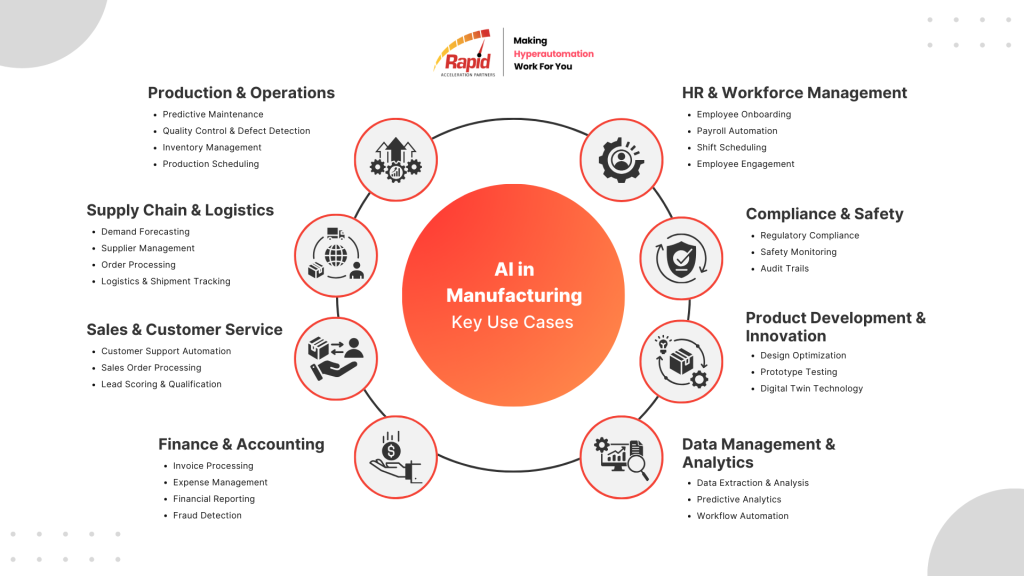
The Benefits of Seamless AI-Driven Workflows in Manufacturing
1. Increased Productivity and Efficiency
With systems integrated through AI, manufacturers can eliminate many of the inefficiencies caused by manual processes and communication barriers. Automation speeds up workflows by reducing the need for human intervention in routine tasks, such as data entry or status updates. This allows employees to focus on higher-value tasks, driving overall productivity.
2. Better Resource Management
AI allows manufacturers to manage their resources more effectively, from materials and equipment to labor and energy. By analyzing data across departments, AI can optimize production schedules, allocate resources where they’re needed most, and ensure that no resources are wasted. This leads to lower costs and more sustainable operations.
3. Reduced Errors and Downtime
Manual processes are prone to errors, whether it’s entering incorrect data or missing a critical maintenance deadline. AI systems, however, operate with precision and consistency, reducing the risk of human error. Predictive maintenance powered by AI also ensures that machinery is maintained before any issues arise, minimizing unexpected downtime.
4. Improved Flexibility and Agility
In today’s fast-paced market, manufacturers need to be agile. AI allows manufacturers to quickly adapt to changes in demand, supply chain disruptions, or new product developments. Real-time data and predictive analytics give manufacturers the insights they need to make informed decisions and adjust their operations accordingly.
While manufacturing has seen transformative gains from AI integration, these advancements are increasingly being mirrored across boardrooms as well. AI solutions built specifically for the C-suite
are equipping leadership teams with real-time insights and strategic automation, ensuring that business decisions are as agile as the production lines they govern.
The Future of Manufacturing is Seamless
The days of siloed systems in manufacturing are coming to an end. AI automation is paving the way for seamless workflows, where data flows freely across departments, decisions are made in real-time, and operations are more efficient than ever.
By integrating AI into their operations, manufacturers can break down the barriers that have long hindered productivity and agility. As AI continues to evolve, the future of manufacturing will be defined by seamless workflows, where the power of automation drives success and innovation at every level. It’s not just about faster production—it’s about smarter, more connected manufacturing that’s ready to meet the challenges of tomorrow.

